Y’s Tips Channel
このチャンネルは、日本に住む外国人のために日本の暮らしに必要な情報を英語で提供します。
#18_Understanding your payroll (給与明細を理解しよう)
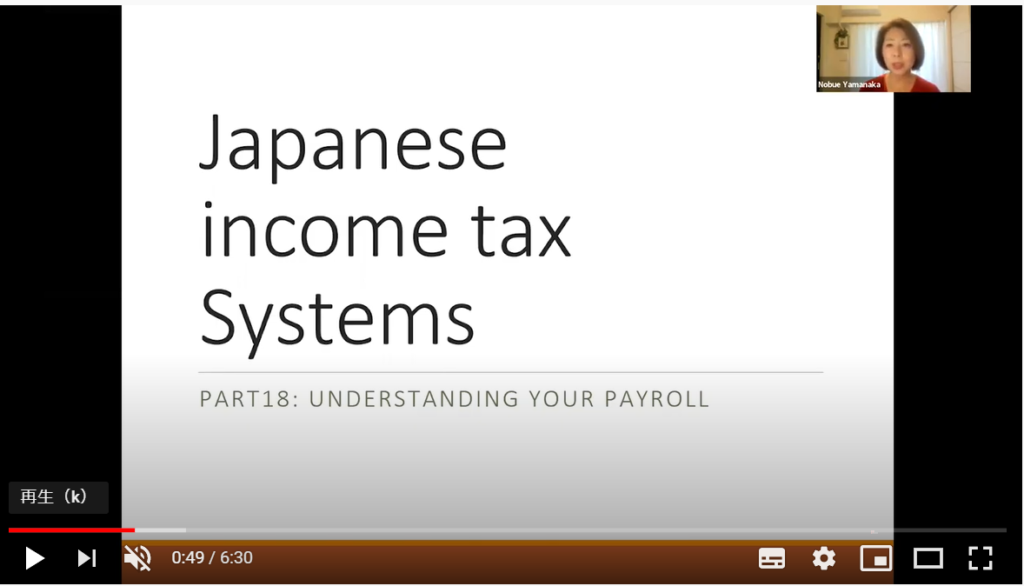
Today I’d like to talk about Japanese income tax systems. So far, I have talked about social insurance systems in my videos. However, I’d like to change the topic to tax systems from this time. For your better understanding, I will start from explanation about the payroll.
今回は、日本の税金についてお話します。これまで、社会保険についてお話してきましたが、今回より話題を変えて税金についてお伝えします。より理解しやすくするために、給与明細のご説明から始めます。
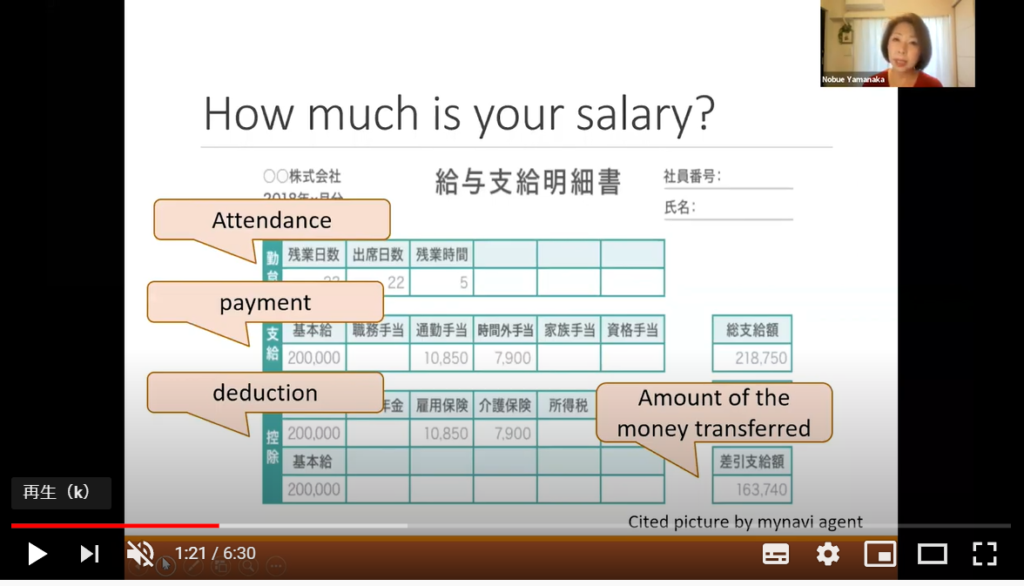
Here is a sample of payroll. When it comes to salary, many people think salary is just the amount of the money transferred. However, there are attendance, payment and deduction parts and all of them have very important meanings.
こちらは、給与明細のサンプルです。給与というと、単に振り込まれた金額を思う方が大勢います。しかし給与明細には、勤怠・支給・控除の3つの構成からなり、それぞれがとても重要な意味を持ちます。
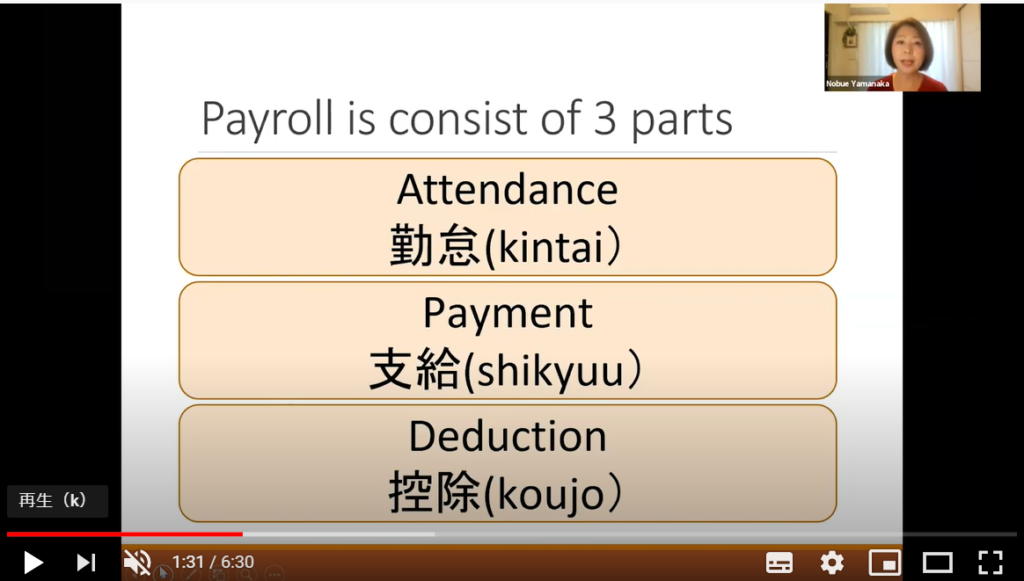
Payroll consists of three parts, attendance, payment and deduction. Those are called kintai, shikyuu and koujo in Japanese. Those things are considered when your salary is paid.
給与明細は、3つの部分で成り立っています。勤怠、支給、控除の3つです。それぞれ給与計算にかかわりがあります。
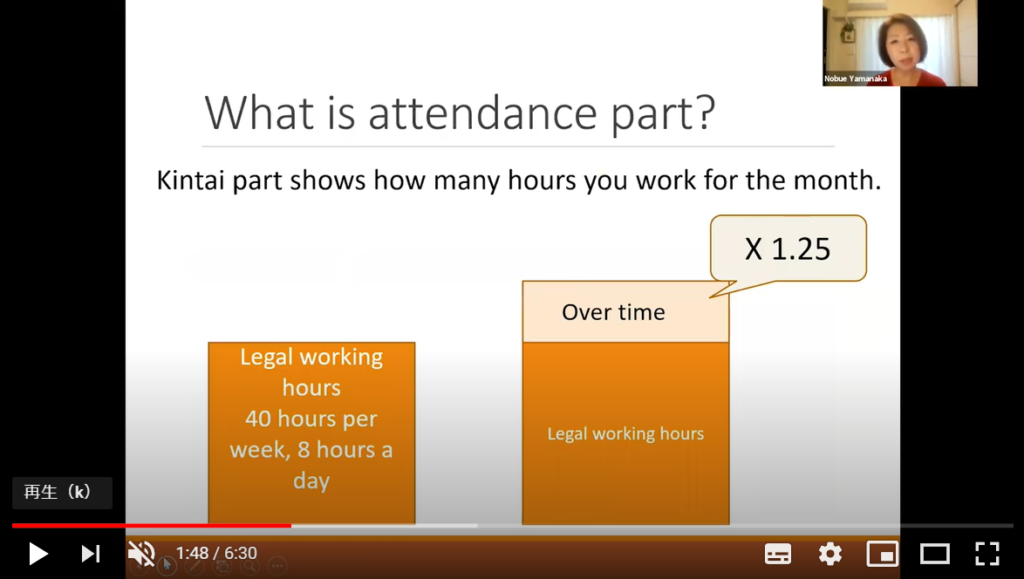
What is the attendance part? Attendance part is called kintai in Japanese. Kintai part shows how many hours you work for the month. Under the law, there is legal working hours, 40 hours per week, 8 hours a day. If you work more than that, you will get paid for the time you work over time. The salary for the exceeded time is legally set 1.25 times higher than that of normal working hours. So it’s very important to check the attendance part.
勤怠とはなんでしょうか?勤怠は、その月にあなたが何時間働いたのかが示されています。労働時間は法律で定められており、週40時間、一日8時間となっています。これ以上働いた分は残業となり、残業代が支払われます。法定労働時間を超えた分は、1.25倍で計算されるように決まっています。そのため勤怠部分をチェックすることが重要です。
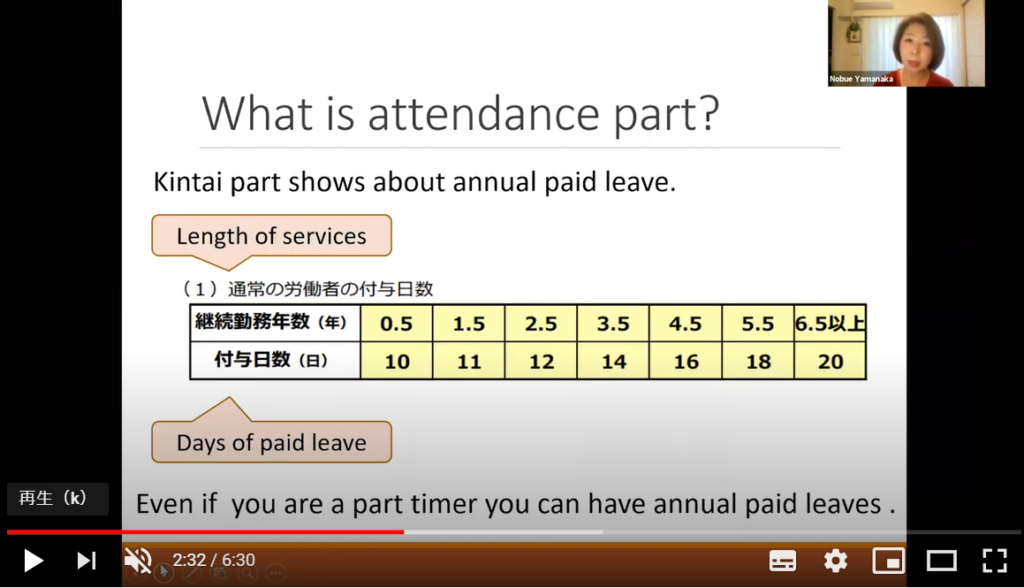
Another information in the attendance part is about annual paid leave. If you work for a company for more than six months, you can have annual paid leave which is set by the law. You can see on the table the numbers of annual paid leave are increased as the length of services gets longer. Even if you are a part-timer, you can have annual paid leave.
勤怠のもうひとつの情報は有給休暇です。会社に6か月以上働いていると有給休暇が付与されることが法律で定められています。この表から分かるように、勤続期間が延びれば有給休暇日数も増えます。パートタイムで働いている場合でも、有給休暇は付与されます。
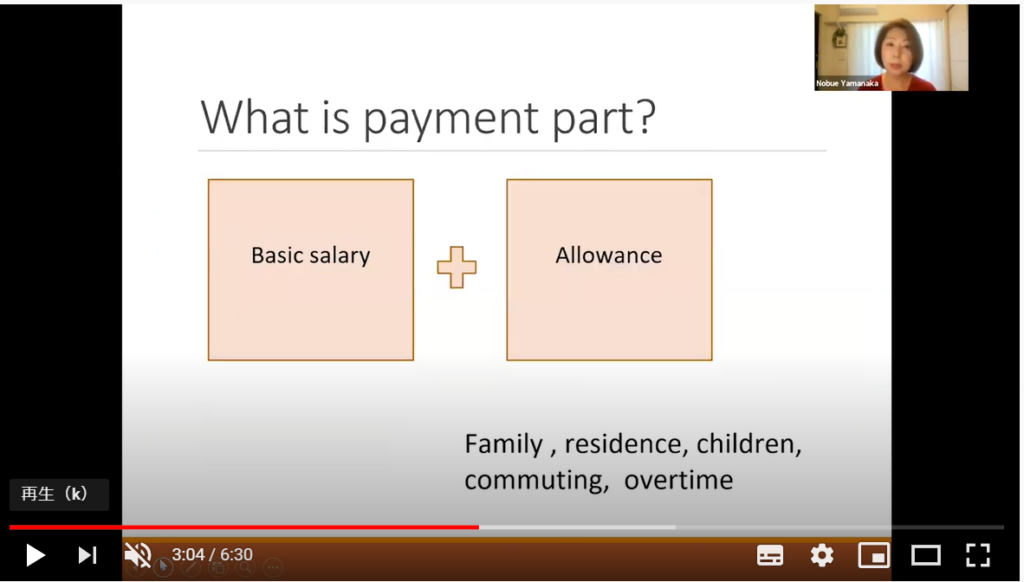
What is the payment part? Payment part is called shikyuu in Japanese. There are two things, basic salary and allowance. Allowances are pretty much different according to the company. Some companies give you allowances for family, residence, children, commuting and so on. If you work overtime, you can have overtime allowance as a part of your payment.
では、支給のパートにはどんなことが書いてあるでしょうか?支給には、基本給と手当の情報が書かれています。手当とは会社によって異なります。家族手当、住宅手当、子ども手当、通勤手当などがあります。また残業をした場合、残業手当も支払われます。
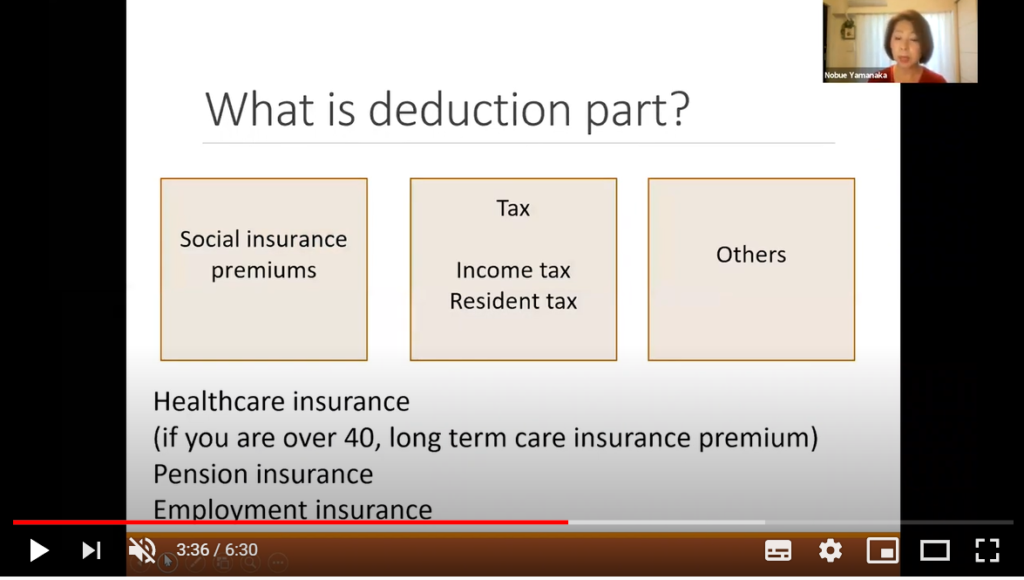
Let’s move on to the deduction part. Deduction part is called Koujo in Japanese. In the deduction part, there are three things, social insurance premiums, tax and others. Social insurance premiums include healthcare insurance, pension insurance and employment insurance. If you are over 40, long-term care insurance premiums are included as well. Tax includes income tax and resident tax. Others are different depending on the companies. Some companies collect money for the company tour or some kinds of club activities.
では、控除のパートに移りましょう。控除には、社会保険料、税金、その他の3種類があります。社会保険料控除は、健康保険、厚生年金保険、雇用保険があり、40歳以上であれば介護保険が含まれます。税金とは所得税と住民税です。その他は会社によって違いますが、社員旅行の費用がクラブ活動費が引かれる場合もあります。
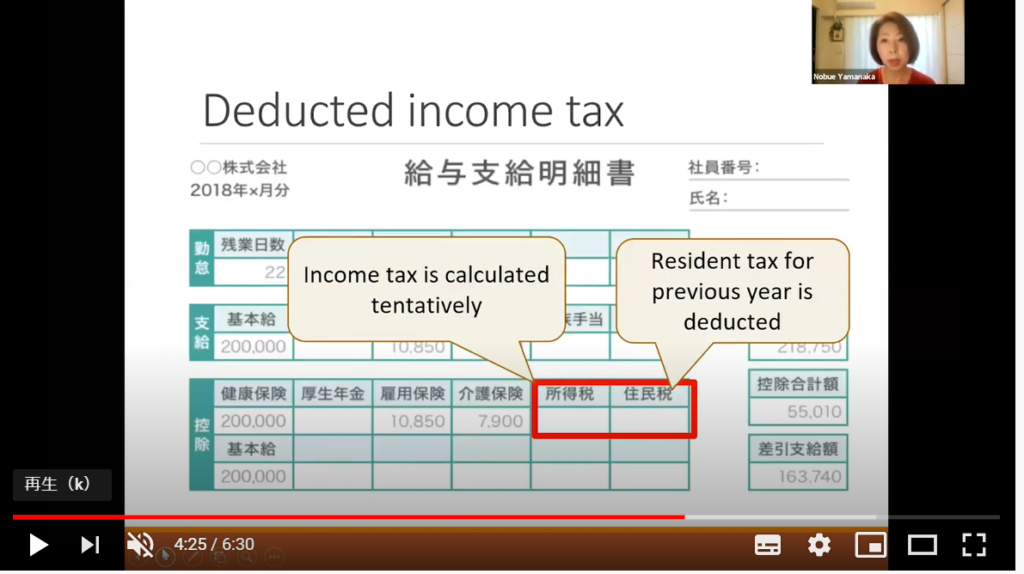
Most of the numbers you can see in the payroll is calculated for the month. For example, your basic salary is calculated for the month and your premiums are also calculated for the month. But the tax part is a little bit tricky. Income tax is calculated tentatively and resident tax for previous year is deducted. Why do we do that?
給与明細のほとんどの数字は、当月の計算です。例えば基本給や、社会保険料は当月分が記載されています。しかし税金の部分は少し違います。所得税は仮計算された金額差し引かれ、住民税は前年の分が差し引かれています。これはどういうことでしょうか?
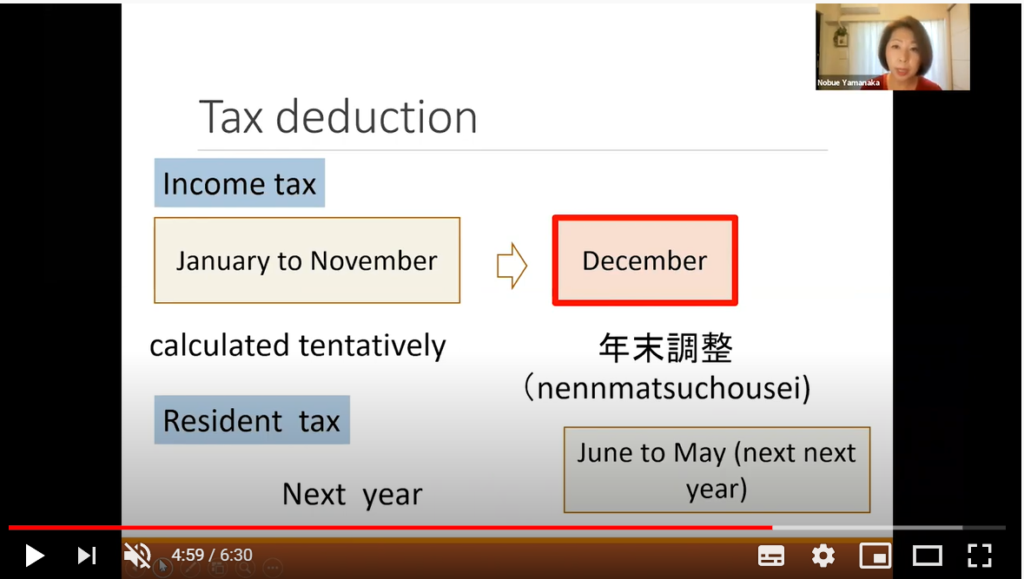
Because income tax cannot be calculated if your income is not fixed. But if we deducted the income tax from the December payroll all at once, it’s not a good idea because income tax can be quite a big amount of money. So, the company deducts tentatively income tax from January to November and it’s finalized in December for the year in total, which is called Nennmatsu chousei in Japanese. The reason why we do Nennmatsu chousei is that the income tax rate is different according to the amount of your income. If you have more income, your tax rate is higher. As for resident tax, it’s confirmed accordingly once your income tax is finalized.
所得税は年収が定まらないと計算できないのですが、もし12月に所得税を全額引落してしまうのも、金額が大きくなることもあるため良い考えではありません。そのため、会社は1月11月の給与で仮の所得税を差し引き12月で調整をするのです。これを年末調整と呼んでいます。年末調整をする理由は所得税の税率は所得によって異なるためです。もし所得が多ければ、税率が高くなります。(超過累進課税制度)住民税も所得税が決まるとそれに応じて決まります。
